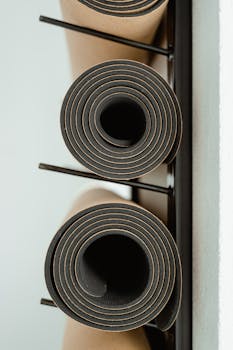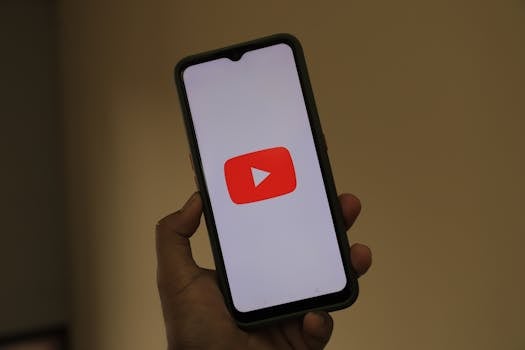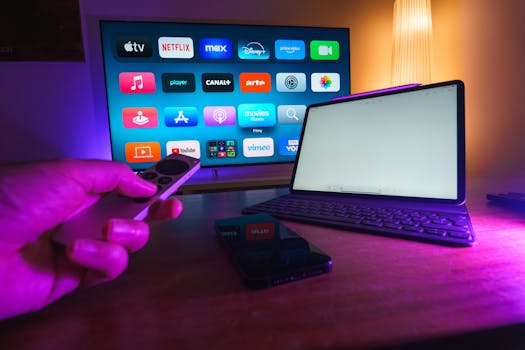Wellness
Free Workout Planners for Home Fitness Goals
Explore smart ways to use free workout planners for home fitness habits. Get real routines, build accountability, and see your motivation grow—perfect for anyone aiming to make wellness progress at their own pace.
Advertisement
Trying to build fitness momentum at home sometimes feels like spinning your wheels. Free workout planners can shift that, turning vague intentions into routines and visible progress you can track each week.
Sticking to health goals at home takes more than impulse. Organizing your sessions, mixing up workouts, and monitoring small wins builds accountability. Free workout planners for home fitness create structure without adding cost or complication for those eager to see genuine changes.
This article details ways to use free workout planners for practical, real-life goals—no wasted time or confusing extras. If you’ve struggled to stay consistent or need inspiration, explore these field-tested tips and examples that make wellness stick.
Find a Planner That Matches Your Routine Style
The right free workout planner meets you where you are—whether you like planning every rep or sketching broad weekly themes. Start with familiar patterns and expand only as you gain confidence.
Someone who prefers a visual overview might print a weekly grid, while another builds custom routines in an app’s planner tab. The most effective planner fits your thinking style, so review several approaches before settling on one that genuinely feels motivating, not overwhelming.
Visual Planners for Daily Habits
Imagine a calendar with colored blocks showing each completed exercise: it’s a simple roadmap. Mark each block yourself after a set. Seeing progress in color builds momentum and shows gaps you can address, moment by moment.
Many free workout planners offer visualization tools like habit chains or heatmaps for a reason. Physically marking off completed workouts, even on paper, taps into the satisfaction loop needed for home fitness consistency.
If your mornings feel scattered, set a rule: open your planner, highlight today’s activity, and spend two minutes reviewing what you’ll do. This bridges intention with action seamlessly each day.
List-Based Planning With Accountability Checks
Lists, whether digital or handwritten, create a clear path: you see every step laid out. A solid routine could read “squats, push-ups, stretching, plank.” Check a box or delete an item after each move. It’s deliberately satisfying.
With free workout planners that include checklist features, set a trigger: log every set or rep as you go. If you miss a box, add a note explaining why and how you’ll adjust next time. This makes your lists actionable and reflective.
Assign yourself a weekly review: “Did I follow my list? Why or why not?” Jot down tweaks. Accountability grows stronger with every honest answer logged—especially when you spot repeat patterns and adapt them.
| Planner Type | Best For | User Action | Takeaway |
|---|---|---|---|
| Printable Calendar | Visual learners | Fill in each workout | Track patterns over a month to spot strong and weak days |
| Digital App Checklist | Task-oriented planners | Tick off each step live | Immediate satisfaction from checkmarks increases follow-through |
| Spreadsheet Logs | Data-focused users | Log sets, reps, and progress | Measure subtle improvements over time |
| Weekly Theme Boards | Big-picture thinkers | Pin weekly focus exercises | Keep goals visible and intentional |
| Written Journal | Reflective users | Record feelings, lessons | Connect emotions to workout habits for deeper adherence |
Building a Personalized Workout Schedule at Home
Customizing a home fitness plan means you choose exactly what, when, and where you’ll work out. Free workout planners give you a clear structure to start.
Begin by picking a realistic cadence: three full sessions per week or short daily routines on weekdays, for example. Prioritize moves you enjoy or recognize as weaknesses. Map these onto your planner and review each Sunday to adjust the coming week based on what worked.
Adapt Your Plan to Your Space and Time
Free workout planners that let you map routines to your living room, garage, or even balcony help sidestep the “I don’t have time or space” excuse. Write: “Ten minutes before shower in bedroom” or “Plank challenge after lunch on patio.” Specificity makes it real.
- Block a fixed time daily: “6:30 am yoga before emails.” Mark it in your planner. You’ll automatically anchor movement into your flow.
- Choose versatile exercises for small spaces: squats, lunges, planks. Input these into your planner to minimize session prep time and maximize output.
- Add cues for quick setup: “Mat by bed.” Little reminders in your planner help you start fast, reducing resistance.
- Allow flexible session lengths: “Minimum 10 minutes counts.” Note this in your planner to encourage even on busy days.
- Record location cues: “Pushups at kitchen counter.” Context-driven habits grow roots.
Choose three moves to anchor your routine: pushups, squats, stretching. Write these as constants, then rotate additional exercises. This mix adds familiarity and variety.
Rotate Weekly Focuses for Full-Body Gains
Each week, assign a focus: mobility, core, upper body, or endurance. Free workout planners with customizable tags let you flag each week’s goal. This steering keeps routines fresh and purposeful, avoiding mental ruts.
- Pick a weekly focus: “This week: core strength.” Write it at the top of each planner page to guide your choices and reflect at week’s end.
- Switch up exercises based on focus. For mobility week, add extra stretching blocks. For upper body, plan extra push-ups.
- Review what felt best. Circle most satisfying workouts and keep them in the next round.
- Set a goal phrase: “Hit 90 seconds plank by Friday” for the stamina focus week. Enter this milestone at your planner’s start.
- Share successes. Tell a friend what you hit this week. Social proof, paired with a planner, boosts completion rates.
Every Sunday, preview the upcoming week. If your focus changes—”I’m feeling sore, let’s do mobility”—update your free workout planner to match. This fosters autonomy and sustainable gains.
Tracking Progress While Keeping Motivation High
Tracking progress builds motivation via evidence: seeing four weeks of notes and checkmarks in your free workout planner makes effort visible. These cues encourage you to keep reaching for the next milestone.
Concrete records demystify fitness improvement. Even a streak of small sessions, tracked in detail, reveals upward movement you wouldn’t see otherwise—”I added two pushups since last week!” is proof, not guesswork.
Log Both Wins and Setbacks for Balance
Record both victories and tough days in your free workout planner. Did your flexibility routine feel easier Tuesday? Write it down. Struggled mid-week? Add a quick note: “low energy, cut session short, drank water instead.” Honest tracking reduces guilt and replaces it with perspective.
This approach also highlights what triggers skip days. For instance, if you notice low motivation every Tuesday, plan a shorter session or fun music that day. Over time, using this data helps you sidestep recurring obstacles.
Celebrate all wins in writing. If you do three workouts instead of five, write: “Three strong sessions, solid effort.” Positive reinforcement fuels your next week.
Mini-Milestone Celebrations Cement the Habit
Highlight each milestone in your planner—first seamless week, longest session, or improved repeating movement. Use a bold color or sticker. These small celebrations have outsize impact over time, similar to giving yourself credit for remembering a friend’s birthday.
Reflect monthly: tally total workouts and note what worked best. Try, “Four weeks, 13 sessions complete. Felt proud of my plank gains.” Spelling out progress is a reward by itself.
Share your favorite milestone (“Did my first 60-second wall sit!”) with friends or an online group for extra motivation. Documenting wins in your free workout planner doubles the sense of achievement.
Troubleshooting Boredom and Plateau in Home Fitness Plans
If you hit a wall with routine workouts, refresh your approach using free workout planners that support variety and creative tweaks. Write new, realistic challenges to reignite your drive—adding small twists can surprise your muscles and restart progress.
Boredom signals it’s time for a planner reset. Instead of scrapping your progress, adjust your format. Move from lists to grids, add habit-tracking stickers, or insert themed weeks (“cardio games,” “balance basics”), to break the pattern and draw new interest.
Try New Formats for Weekly Motivation
Switch planner formats after every fourth week. One month use a vertical habit tracker, next a visual progress chart. Seeing workouts in new shapes perks up attention and helps you notice different gaps or strengths in your plan.
For example, if plain checklists stall your motivation, swap in a chart where each block fills with color as you complete exercises. The tactile act of marking changes stimuli and keeps the process enjoyable, especially on sluggish days.
By including surprise “wild card” days—where you choose any activity or invent a circuit—your free workout planner adds flexibility, preventing the rigidness that breeds boredom. Write reminders like, “Try a walk at sunset” or “Dance for 10 minutes” to re-engage enthusiasm.
Revisit and Adjust Goals Monthly
On the last Sunday each month, evaluate your plan using a specific question: “What routine actually felt uplifting? What can I phase out?” Use these answers to refine your planner for the next period, avoiding mindless repetition.
If your original goals now cause frustration—like a five-day strength stretch—dial back to three varied sessions. Record the adjustment in your next planner entry. Adapting focus, rather than pushing through misery, secures longevity.
Consult your free workout planner’s log for surprising victories—maybe endurance improved without you noticing, or a certain morning playlist dramatically lifted your consistency. Use this information concretely: repeat what works, redesign what doesn’t.
Turning Daily Wins Into Long-Term Wellness Gains
Sustained wellness results grow from small, consistent actions logged each day. Using free workout planners, you can systematically stack these wins into bigger outcomes over months, not just weeks.
A planner that shows your consistency streak—whether five days or two weeks—reinforces the power of small, repeatable efforts. This mentality transforms fitness from a short-term sprint to a marathon of healthy habits embedded in your everyday life.
Anchor Fitness Habits With Environment Cues
Success builds on cues in your environment. Place your planner beside your toothbrush and review your plan each morning. Or attach a sticky note with your day’s moves on the fridge, a spot you’ll see guaranteed. Physical reminders remove friction.
If digital reminders anchor you better, set recurring alerts tied directly to your free workout planner app. A notification saying, “Log your five minutes of squats” at lunchtime can transform that idle scroll into action—consistency is born from such simple triggers.
Make every cue visible and accessible. For example, posting tomorrow’s plan on the door you leave most keeps your intention present, reducing forgotten days. Small cues compound into a lifestyle shift overtime.
Use Reflective Prompts to Strengthen Motivation
Reserve one line each week in your planner: “What worked?” and “What made today easier?” This reflection encourages learning. Maybe adjusting a workout time helped, or stretching before bed made recovery better—jot it down for next time.
Ask yourself: “On which days did wellness feel effortless?” Logging this insight makes it easier to replicate and multiply those smooth experiences, fueling the cycle of improvement.
Review your answers monthly and spot trends. If you notice a particular plan, playlist, or time repeatedly delivers the best results, turn it into a standing feature in future routines, anchoring your success in evidence and memory.
Getting Accountability—Even Without a Gym or Group
Accountability can thrive at home, especially with a free workout planner that lets you share your wins or updates with others. Connecting with someone—even remotely—keeps energy high and deepens follow-through.
Share your routine milestone or completed plan with a friend weekly: “Here’s my week—three solid days, one bonus walk.” Accountability doesn’t have to be public; a single trusted partner boosts results remarkably.
Pair Up Remotely for Shared Challenges
Invite a friend or family member to swap updates—a quick photo of your checked planner or a screenshot of your app streak. This mutual commitment feels lightweight but drives both participants to finish strong, even on “off” days.
If syncing up in real time, schedule a virtual coffee where you review each other’s progress. Ask, “What made your best workout ‘click’ this week?” Mutual feedback turns insights into new actions, bridging solitary effort with collective improvement.
For accountability without direct contact, join a free online community focused on at-home fitness planners. Search for prompts like “show us your week’s plan”—these spaces offer inspiration and gentle nudges forward, no matter location.
Celebrate and Recalibrate Using Your Planner
Mark end-of-week wins boldly in your planner—circle top achievements, underline especially fun routines. This ritual adds a tangible sense of closure, making each week self-contained and purposeful.
If progress stalls, use your free workout planner as a recalibration tool. Write one word describing the toughest moment: “fatigue,” “boredom,” or “busy.” Next to it, suggest a solution for the upcoming week. This turns setbacks into stepping-stones, not dead ends.
Repeat the accountability process until the ritual feels automatic. Each logged celebration or course-correction plants a deeper root for your new wellness habits—visible, lasting change starts with small tracked steps.
Staying Flexible While Building Lifelong Fitness Habits
Adjusting your approach ensures that using free workout planners remains supportive, never rigid. The most successful plans flex with your changing life, seasons, and needs, rather than boxing you into restrictive patterns.
If you get sick or busy, mark a “pause” or “rest week” in your planner. This visual permission helps override guilt and sets the expectation that wellness adapts to you, not the reverse.
Write compassionate notes to yourself directly in your free workout planner: “Needed extra sleep, back tomorrow” or “Prioritized rest after long week.” Kind self-language builds sustainability into your routine, rather than fueling short-lived, all-or-nothing surges.
Try analogies to reinforce this adjustable mindset: treating your fitness like a resilient houseplant—sometimes more water, sometimes less, but always attentive—guides your planner usage to respond gently, not rigidly.
The longer you use your planner, the more it reflects your unique journey. Let it evolve: add new moves, swap formats, write motivational quotes, or even decorate with doodles to keep the process lively and personal.
Planning for Wellness Success—Your Next Step Starts Here
Every effective at-home fitness journey begins by tracking honest routines using one of the many free workout planners available. Thoughtful planning clarifies actions, drives consistency, and strengthens lasting motivation.
Integrate your free workout planner into daily life as a visible, trusted partner. Each marked box, celebratory note, or gentle self-correction echoes your investment in ongoing wellness—however your routines shift or grow.
Embrace every stage and every new entry: wellness thrives not on restriction, but on adaptable, mindful structure. Let your planner evolve with you and watch healthy habits quietly take root for the long term.
Trending Topics

Best Mindfulness Tools to Stay Focused Throughout the Day
Keep focus sharp with mindfulness tools that train awareness, reduce distractions, and help you stay centered throughout the day.
Keep ReadingYou may also like

Calming Sound Apps for Instant Relaxation: Find Your Quiet Anywhere
Relax instantly with calming sound apps offering nature tracks, white noise, and soft tones for peaceful focus.
Keep Reading
Yoga Apps That Guide Beginners with Simple Daily Sessions
Improve flexibility and calm with yoga apps that guide beginners through simple daily sessions at their own pace.
Keep Reading

